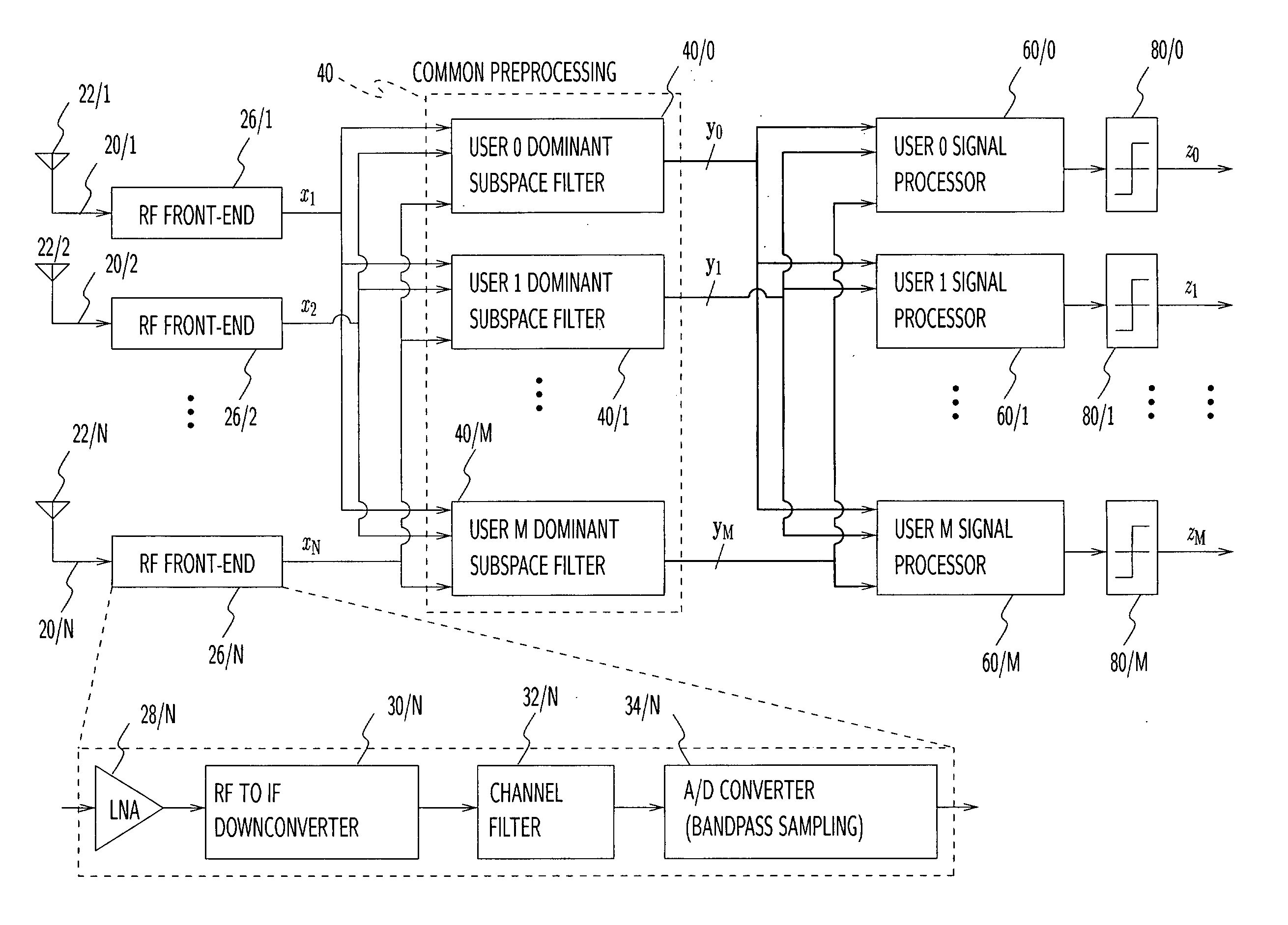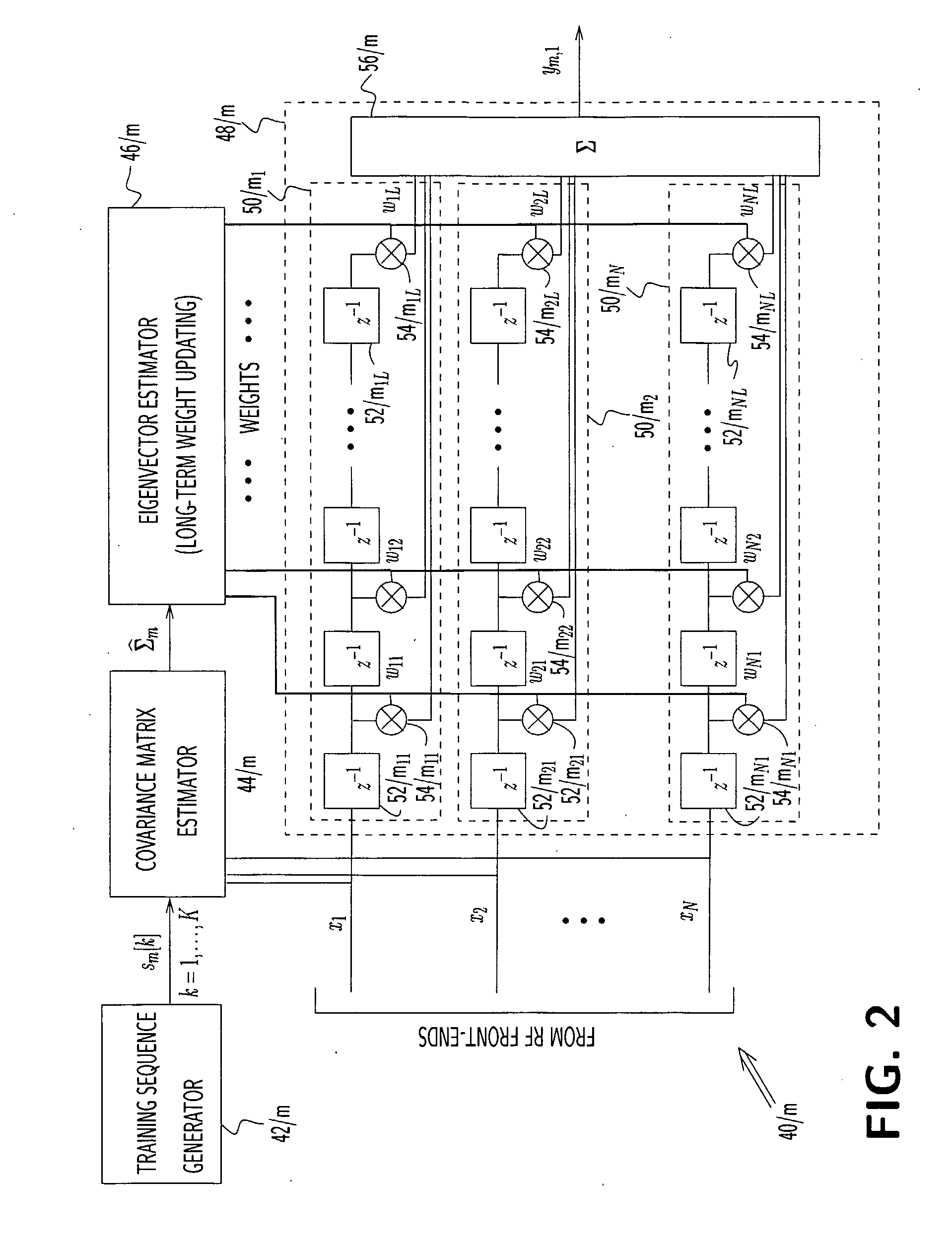Multi-user adaptive array receiver and method
a multi-user, adaptive array technology, applied in diversity/multi-antenna systems, transmission monitoring, multiplex communication, etc., can solve the problems of limited ability against intersymbol interference (isi), limited ability against cci, and mean-square error, so as to reduce complexity and cost
- Summary
- Abstract
- Description
- Claims
- Application Information
AI Technical Summary
Benefits of technology
Problems solved by technology
Method used
Image
Examples
Embodiment Construction
[0077] To facilitate understanding of the construction and operation of the preferred ebodiments, some basic theory will first be presented.
[0078] As discussed, the optimal MMSE solution can be obtained through a linear combination of all signals' matched-filters [7], [8]. Given an antenna array and a dispersive (i.e. ISI-inducing) propagation environment, it follows that the optimal MMSE solution can be obtained as a linear combination of all signals' space-time matched-filters. Here, a space-time filter matched to a given signal is a bank of N temporal filters, each of which processes one of the N antenna elements' outputs, and whose outputs are combined to maximize the said signal's power with respect to white noise and disregarding interference from the other man-made signals.
[0079] This is advantageous in a multi-user SDMA context since the set of matched filters form a common basis which can be reused to obtain each signal's MMSE solution. In standard optimal architectures, ...
PUM
 Login to View More
Login to View More Abstract
Description
Claims
Application Information
 Login to View More
Login to View More - R&D
- Intellectual Property
- Life Sciences
- Materials
- Tech Scout
- Unparalleled Data Quality
- Higher Quality Content
- 60% Fewer Hallucinations
Browse by: Latest US Patents, China's latest patents, Technical Efficacy Thesaurus, Application Domain, Technology Topic, Popular Technical Reports.
© 2025 PatSnap. All rights reserved.Legal|Privacy policy|Modern Slavery Act Transparency Statement|Sitemap|About US| Contact US: help@patsnap.com



